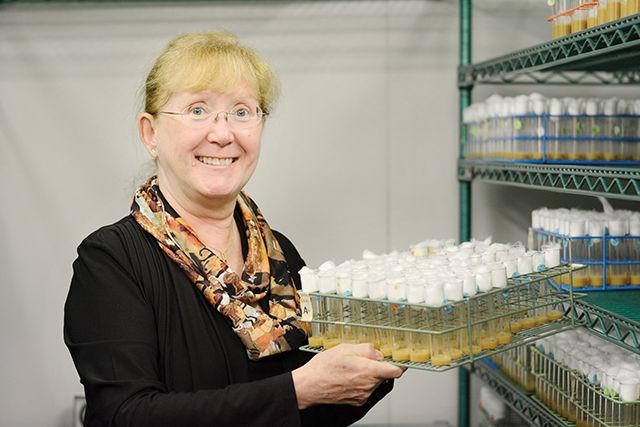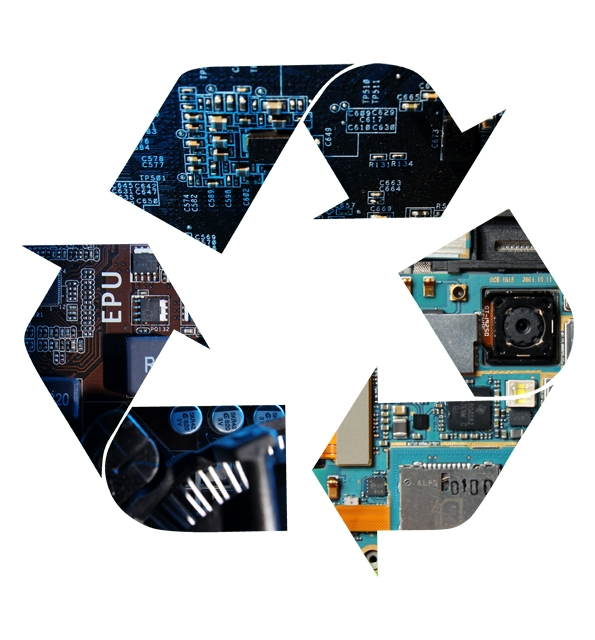Biosensors can be used to detect amino acids in fertilizers, pathogens in the bloodstream and food supplies, and even molecular markers that appear with the onset of prostate cancer. N.C. State researchers Leslie Sombers and Leyda Lugo-Morales have developed exceptionally sensitive biosensors of their own for studying the brain in real time.
Their biosensors have evolved to the extent that Sombers and Lugo-Morales are using it to study Parkinson’s disease and diabetes. They are doing this by making the first ever measurements of rapid glucose fluctuations in the brain and studying how they contribute to neural functions.
“We are trying to figure out the molecular underpinnings that underlie cognitive degeneration in glucose-related disorders,” Sombers, an assistant professor of chemistry, said. “A huge proportion of the population suffers from diabetes, and that number just keeps going up every year…. There are a lot of cognitive disorders associated with the disease.”
Sombers’ and Lugo-Morales’ biosensors consist of an electrode, a tiny carbon fiber, that can be placed in live tissue to measure electroactive molecules. These electrodes pass an electric potential through the tissue being studied and measure the current produced by molecules around the electrodes. The amount of current produced directly corresponds to the amount of molecules being studied.
This basic procedure has been done before – however, Sombers and Lugo-Morales have greatly improved its accuracy by using their own voltametric biosensors, as opposed to the amperometric biosensors that have been used traditionally.
Amperometric biosensors only expose the tissue to one specific electrical potential. This gives researchers a single current, and from there they can measure the amount of the molecule of interest, or the analyte.
However, amperometric biosensors can also detect molecules not intended to be studied.
“So you will have a huge signal, but you don’t know which part of the signal comes from the analyte,” Lugo-Morales said. “The problem of amperometry is that it lacks selectivity.”
In order to prevent detection of other molecules, the biosensors have to be coated in several layers of specially-created membranes.
“In principle this works very well,” Sombers said. “However, it slows things down significantly.”
These membranes decrease the measurement speed of the biosensors, causing measurements to take multiple seconds — a huge time frame compared to the speed of human mental processes.
“In the brain, events occur very fast – in milliseconds.” Lugo-Morales said. “If you slow down your response at the electrodes you will not be able to collect important information.”
These membranes also often fall off and are difficult to reproduce.
So Sombers and Lugo-Morales set out to find a way to bypass the use of membranes, and came up with their voltametric biosensors.
With voltametric biosensors, the electric potential applied to the tissue to is not constant. Instead it is varied and the current is measured at each potential.
“Instead of holding our biosensor at one single potential we scan the potentials and collect current while scanning,” Sombers said. This variation of potential tells researchers not only how much analyte there is, but what the analyte is and which molecules are mixed with the analyte.
“It’s kind of like a fingerprint that tells us what we are looking at,” Sombers said. “And the amount of current that we get tells us how much of the [molecule] there is.”
Moreover, Sombers and Lugo-Morales have upgraded the materials that they use to produce their biosensors.
“Everyone else is basically using tiny little wires, and we’re not,” Sombers said. “We’re using carbon fibers.”
These carbon fibers are biologically compatible, unlike metals which can be toxic and must be treated with proteins before they can be used, which further slows down the process. The carbon fibers are also much smaller.
“[The carbon fiber] is seven micrometers in diameter and 100 micrometers in length,” Lugo-Morales said. “If you compare it to a hair it will be 10 times smaller because we want to avoid damaging the brain.”
Even though Sombers is using her biosensors to detect glucose levels specifically, she says the voltammetric biosensors will be able to detect many more biomolecules in the future. Sombers believes that her research will take about 5-10 years to make it to other research institutions, but she hopes it will become industrially and widely adopted in the next 20 years.




